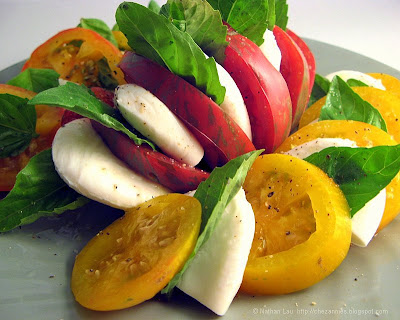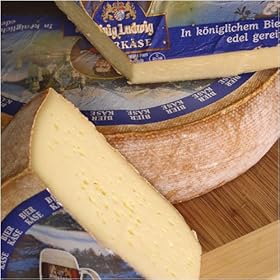CHEESE AND WINE PAIRING THOUGHTS
Cheese and Wine Pairing (It’s Not a Cookie Cutter Science Anymore)
Objective – Don’t Ruin The Wine!!! – What does this mean? It means that the wine should taste just as good with the cheese as it does on it’s own! (Now, for those of you who enjoyed our Cheese and Wine Basics 101 courses in January, you know exactly what I am talking about, because your palates rejected some of the wines I put on the menu, because they were “The Common Mistake Wines”. But you also really appreciated and grew a new appreciation for wines, which you never had before because of their perfect pairing with the cheeses.)
Common Mistake Wines: HEAVILY OAKED WINES!! But, as with life, there is a place and time for these heavily oaked wines. So, don’t get to upset!
I would love to be able to share with you all the wonderful cheeses and wine pairing solutions out there, but there are just too many. Hence, for the purpose of this page, we will focus on more common wines and cheeses. Please note that I am a HUGE SHERRY FAN, and while I think sherries provide the perfect match to many cheeses, I’m saving a write up for Sherries closer to May as we will be exploring the food from Basque and Wines from Spain in a special Private Catered Tasting Event. Now there are two things to take into consideration when pairing cheeses with wines, and they are texture and intensity.
Texture: Is the cheese firm, dry, creamy or does it coat your palate? Is the wine crisp and refreshing? Is the wine a full-bodied Viognier or is it champagne beaming with high acidity? Matching textures is usually a good way to go. However, again can be tricky. (I prefer matching cheeses with the intensity factor)
Intensity: For delicate wines, choose delicate cheeses. For some examples, Look below:

• Camellia - a soft buttery goats milk cheese) will pair nicely with a full-bodied, but low oak Chardonnay, Viognier, White Burgundy or a German Riesling. (I recommend the La Crema 2007 Russian River Chardonnay or the Black Ridge Vineyards Viognier). • Hudson Valley Camembert - this cheese is not like your traditional Camembert. It is softer with some nutty nuances and is buttery, coating your tongue) A nice full malolactic Chardonnay from California will do well with this one. (I recommend the Maldonado 2005 Les Olivets Chardonnay, Far Niente 2006 Chardonnay, Napa Valley) 
• Mozzarella di Bufala (Since, the milk of this cheese is from a Buffalo and not a cow, the taste is more pronounced with a wee bit of tart and little game. However, still mild in comparison to some of the other cheeses, we will be exploring. This cheese is also typically used in antipasto platters before a meal or in a caprese salad, which here in California, I’ve noticed we add an extra bit of zing to this Italian favorite by adding vinegar) – Hence, make sure you choose a wine that is light, dry and has some zing to it! (I recommend Fiano Greco, A dry rose from Provence. Infact, I love the combination of fresh tomatoes, white balsamic, mozzarella, olive oil, red onion, cracked pepper and a sprinkle of kosher salt with a crisp, inviting dry rose!)
Intensity: For bold wines including BIG BOLD REDS, choose cheeses with bolder flavors. Although, a general rule of thumb on red wines is to match them with firm, dry cheeses. But again, there are exceptions, which we will be exploring in a couple of weeks.
• Dry Monterey Jack – This wine pairs well with Sonoma County Zinfandels as there is enough pepper and tannic structure to balance the intensity of this nutty cheese (I recommend, the Quivera 2005 Zinfandel, Dry Creek Valley or the Kokomo Zinfandel from Dry Creek Valley. I do not recommend zinfandels from the Paso Robles region as these zinfandels are massive fruit bombs and generally the alcohol levels are too high. Alternatively, I would put a Paso Zin with meat, which has a nice sauce to compliment the flavors of the wine.)

• Cheshire – The texture of this cheese is reminiscent to cheddar, but the acidity levels are a bit higher, so you want to make sure you choose a wine that can balance the acidity. German Riesling is always a safe bet, but if you are in the mood for red, a young cabernet sauvignon or young zinfandel will do quite nicely as well. I recommend the Ramey 2005 Napa Valley Cabernet Sauvignon, X Winery 2006 Cabernet Sauvignon, Woodward Canyon Nelms Road 2006 Cabernet Sauvignon and the Portalupi 2006 Zinfandel.

• Asiago – This cheese can range in intensity from a young delicate asiago to an aged asiago that is firm, dry and more intense in flavor. If it is young and delicate, go with a medium bodied Pinot Grigio or Tocai Fruliano. However, if it is aged look for a medium to full bodied red wine, like Chianti, Merlot or Syrah. I recommend California Syrah and there are an abundance of good California Syrah’s out there! However, my pick would bee the Macrostie 2004 Wildcat Mountain Syrah. This syrah tends to have more blueberry characteristics with some light bacon fat, but is nicely balanced!
 LET’S GET STINKY!!!!! My friends and I refer to these stinky cheeses as “Smelly Foot Cheeses”. Hahaahaha, Does that mean I like stinky feet? LET’S GET STINKY!!!!! My friends and I refer to these stinky cheeses as “Smelly Foot Cheeses”. Hahaahaha, Does that mean I like stinky feet?

• Beer Cheese – Ahh Hail to the Germans! This is a very stinky cheese and can range in flavor from stinky to real stinky with lots of gamey notes. Hence, you need a wine with backbone to take on this bad boy! California Barbera does quite well with this cheese. I was very surprised myself. But I think, because we use more obvious oak in our wines in California and extract more acidity out of the wine, it matches well. I recommend Mt. Vernon Winery Barbera and Portalupi Barbera. These two wines range in style but played very nicely with this stinky monster.

• Fontina – California produced Fontina’s aren’t as stinky as I like them, so make sure you get an Italian Fontina. Fontina has earthy notes with a touch of sweetness, so you will want to play on these notes. An Alsatian Pinot Gris or Viognier will work well as with a California or French Chardonnay. However, red wines without a lot of tannin will fair nicely too, such as Pinot Noir or Syrah. I recommend Four Vines 2006 Pinot Noir, Russian River or the Mountford 2004 Pinot Noir, Waipara Valley, New Zealand!
• Caramelized Onion Cheddar – Enough said, I think you get the idea with just the description of this cheese. Now, I’m not a huge fan of infused cheeses myself but this one really rocked off the charts in our tastings! You can find it at Trader Joes. Now, the match made in heaven with this wine is Pinot Noir! I recommend the Dog Point 2005 Pinot Noir, New Zealand. This pinot has beautiful cherry and earthy notes, but it also has enough acidity to cut through the fat of this cheese!
BLUE CHEESE!!
You know the funny thing about blue cheese is that I have found people constantly pairing blues with red wines. I don’t know why, but STOP! I mean ultimately it’s about you and what you like, but please take my advice and try something not red! Although, sometimes a nice banyuls or port wine will do nicely. But for these purposes, leave the Cabernet Sauvignon alone!
Another important thing to note about blue cheeses is that they range severely in flavor. A young blue is usually very mild in contrast to that of a blue, which has had time to develop. Mild creamy blue cheeses do well with wines with a touch of sweetness.

• Great Hill Blue – This blue has lots of character. Produced in Massachusetts, it is composed of raw cow’s milk and has plenty of blue-grey veining. The texture is creamy at the heart and the flavors are medium piquant with a tanginess/tart from buttermilk. I recommend a nice sauternes or a Late Harvest Sauvignon Blanc like Trecini. You want something with Botrytis!
 • Blue d’Auvergne – Here is an example of a blue cheese which ranges in flavor based on the age of the cheese. If you get your hands on a young one (which I don’t think you can in this country, pair the cheese with a nice off dry Riesling like the Radog 2007 Riesling or a German Kabinett Riesling) Since many of these cheeses are imported, there is in transit time which contributes to their age.
o Now, if you taste this cheese and it is buttery, dense, moist, robust and a little spicy, then you have a Blue d’Auvergne with some age on it. More mature with pungent nuances call for a wine with sweeter notes. I recommend the Chateau Guiraud 2005 Sauternes (which by the way was on Wine Spectators Top 100 in 2008. This beautiful and young sauterne was #4). A tawny port or a banyuls will compliment this style of cheese too.
• Gorgonzola – There are many types of Gorgonzola out there. However to simplify things we are going to throw them into two categories. Dolce Gorgonzola Dolce “Sweet” (creamy) and regular Gorgonzola, firm, spicy with penetrating flavor and more veining.

o Dolce Gorgonzola – YUMMY, especially with dates drizzled with wildflower honey or thyme infused honey. Okay getting back to wines. Sparkling wine provides a nice contrast to the creamy texture of dolce Gorgonzola. However, I have often found, that if you are going to insist on red, that a fruity zinfandel or late harvest zinfandel with lower alcohol levels does nicely too.But make sure that there is a fair amount of acidity!


o Mountain Gorgonzola – Firm and Spicy – Pair this cheese with a sweet wine like a late harvest Riesling or Vin Santo. I recommend the 2004 Dolce or the Selvapiana Vin Santo. The other nice thing about putting a Vin Santo on your cheese plate is that often times there may be biscotti on the plate and vin santo and biscotti go hand in hand!
Check out the differences in between the dolce gorgonzola and the mountain. Color is also pretty true too. As you can see, there is quite a bit of information out there. So check back in a couple of weeks for a new page!
|